Franziska Bell
Joint Contextual Modeling for ASR Correction and Language Understanding
Jan 28, 2020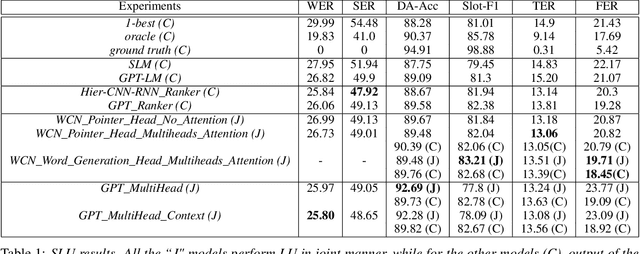
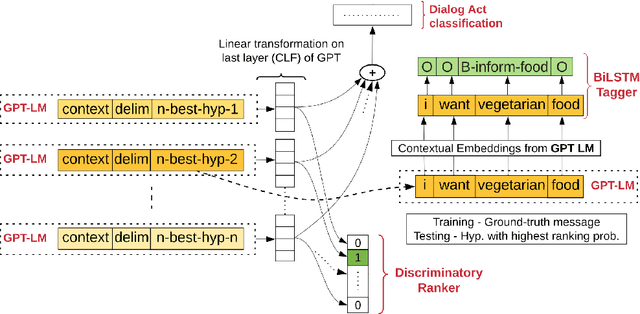
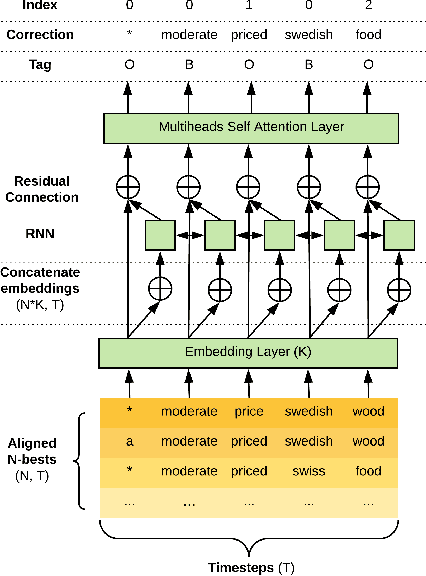
Abstract:The quality of automatic speech recognition (ASR) is critical to Dialogue Systems as ASR errors propagate to and directly impact downstream tasks such as language understanding (LU). In this paper, we propose multi-task neural approaches to perform contextual language correction on ASR outputs jointly with LU to improve the performance of both tasks simultaneously. To measure the effectiveness of this approach we used a public benchmark, the 2nd Dialogue State Tracking (DSTC2) corpus. As a baseline approach, we trained task-specific Statistical Language Models (SLM) and fine-tuned state-of-the-art Generalized Pre-training (GPT) Language Model to re-rank the n-best ASR hypotheses, followed by a model to identify the dialog act and slots. i) We further trained ranker models using GPT and Hierarchical CNN-RNN models with discriminatory losses to detect the best output given n-best hypotheses. We extended these ranker models to first select the best ASR output and then identify the dialogue act and slots in an end to end fashion. ii) We also proposed a novel joint ASR error correction and LU model, a word confusion pointer network (WCN-Ptr) with multi-head self-attention on top, which consumes the word confusions populated from the n-best. We show that the error rates of off the shelf ASR and following LU systems can be reduced significantly by 14% relative with joint models trained using small amounts of in-domain data.
OCC: A Smart Reply System for Efficient In-App Communications
Jul 18, 2019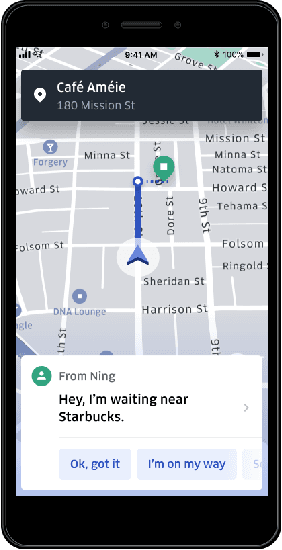
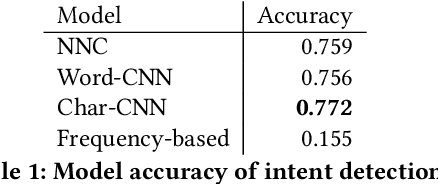
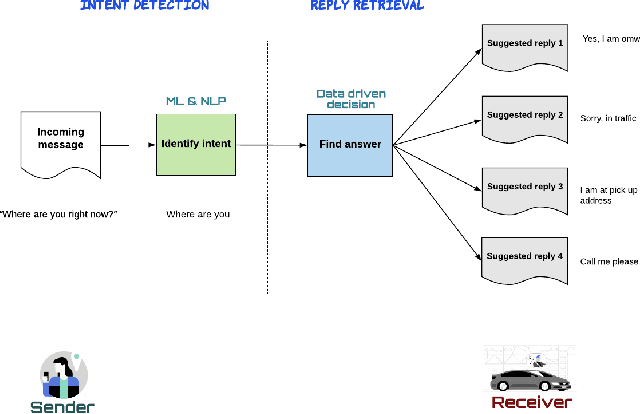

Abstract:Smart reply systems have been developed for various messaging platforms. In this paper, we introduce Uber's smart reply system: one-click-chat (OCC), which is a key enhanced feature on top of the Uber in-app chat system. It enables driver-partners to quickly respond to rider messages using smart replies. The smart replies are dynamically selected according to conversation content using machine learning algorithms. Our system consists of two major components: intent detection and reply retrieval, which are very different from standard smart reply systems where the task is to directly predict a reply. It is designed specifically for mobile applications with short and non-canonical messages. Reply retrieval utilizes pairings between intent and reply based on their popularity in chat messages as derived from historical data. For intent detection, a set of embedding and classification techniques are experimented with, and we choose to deploy a solution using unsupervised distributed embedding and nearest-neighbor classifier. It has the advantage of only requiring a small amount of labeled training data, simplicity in developing and deploying to production, and fast inference during serving and hence highly scalable. At the same time, it performs comparably with deep learning architectures such as word-level convolutional neural network. Overall, the system achieves a high accuracy of 76% on intent detection. Currently, the system is deployed in production for English-speaking countries and 71% of in-app communications between riders and driver-partners adopted the smart replies to speedup the communication process.
* link to demo: https://www.youtube.com/watch?v=nOffUT7rS0A&t=32s
 Add to Chrome
Add to Chrome Add to Firefox
Add to Firefox Add to Edge
Add to Edge